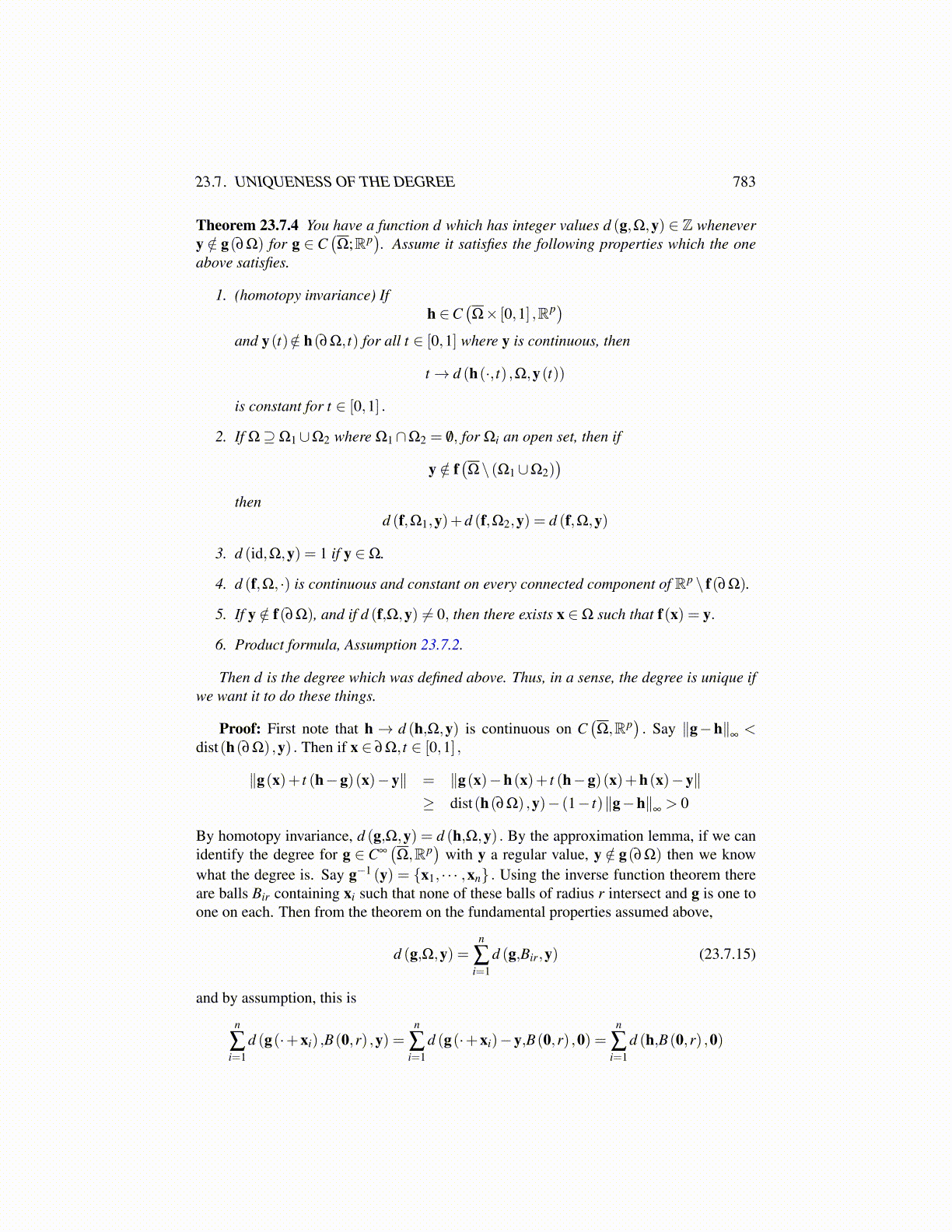
23.7. UNIQUENESS OF THE DEGREE 783
Theorem 23.7.4 You have a function d which has integer values d (g,Ω,y) ∈ Z whenevery /∈ g(∂Ω) for g ∈ C
(Ω;Rp
). Assume it satisfies the following properties which the one
above satisfies.
1. (homotopy invariance) Ifh ∈C
(Ω× [0,1] ,Rp)
and y(t) /∈ h(∂Ω, t) for all t ∈ [0,1] where y is continuous, then
t→ d (h(·, t) ,Ω,y(t))
is constant for t ∈ [0,1] .
2. If Ω⊇Ω1∪Ω2 where Ω1∩Ω2 = /0, for Ωi an open set, then if
y /∈ f(Ω\ (Ω1∪Ω2)
)then
d (f,Ω1,y)+d (f,Ω2,y) = d (f,Ω,y)
3. d (id,Ω,y) = 1 if y ∈Ω.
4. d (f,Ω, ·) is continuous and constant on every connected component of Rp \ f(∂Ω).
5. If y /∈ f(∂Ω), and if d (f,Ω,y) ̸= 0, then there exists x ∈Ω such that f(x) = y.
6. Product formula, Assumption 23.7.2.
Then d is the degree which was defined above. Thus, in a sense, the degree is unique ifwe want it to do these things.
Proof: First note that h → d (h,Ω,y) is continuous on C(Ω,Rp
). Say ∥g−h∥
∞<
dist(h(∂Ω) ,y) . Then if x ∈ ∂Ω, t ∈ [0,1] ,
∥g(x)+ t (h−g)(x)−y∥ = ∥g(x)−h(x)+ t (h−g)(x)+h(x)−y∥≥ dist(h(∂Ω) ,y)− (1− t)∥g−h∥
∞> 0
By homotopy invariance, d (g,Ω,y) = d (h,Ω,y) . By the approximation lemma, if we canidentify the degree for g ∈ C∞
(Ω,Rp
)with y a regular value, y /∈ g(∂Ω) then we know
what the degree is. Say g−1 (y) = {x1, · · · ,xn} . Using the inverse function theorem thereare balls Bir containing xi such that none of these balls of radius r intersect and g is one toone on each. Then from the theorem on the fundamental properties assumed above,
d (g,Ω,y) =n
∑i=1
d (g,Bir,y) (23.7.15)
and by assumption, this is
n
∑i=1
d (g(·+xi) ,B(0,r) ,y) =n
∑i=1
d (g(·+xi)−y,B(0,r) ,0) =n
∑i=1
d (h,B(0,r) ,0)